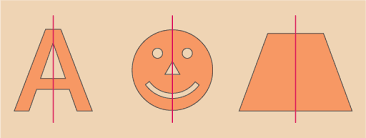Did you know that a trapezoid is a quadrilateral with at least one line of symmetry? This quadrilateral is also known as a trapezium in Canadian English. So, how many lines of symmetry does a trapezoid have? Find out below! And remember, if you’re unsure of the answer, you can always go to a math teacher for a help!
If you look at the picture below, you’ll see that a trapezoid has two lines of reflectional symmetry. This means that the trapezoid has two lines of symmetry when you draw it from A to B. On the other hand, a trapezoid that is symmetrical along one line has no line of reflectional symmetry and only has one line of rotational symmetry.
When you fold a trapezoid over, the parts on either side of the line are the same. The shape will be symmetrical if the parts on either side of the line have the same area. So, a trapezoid with one line of symmetry is called an isoscles trapezoid. So, if you’re interested in learning more about geometry, this lesson is for you. So, now that you know what line of symmetry is, you can apply it in your math classes and beyond. You’ll be surprised at how easy it is to learn about the basic shapes in your math class.
The question of how many lines of symmetry do trapezoids have?
There are four types of lines of symmetry. For example, a triangle has two lines of symmetry and an isosceles triangle has only one. An isosceles triangle is always isosceles, meaning that the two sides are equal lengths. And, a square has four lines of symmetry. You can use this to find out how many lines of symmetry a trapezoid has.
The question of how many lines of symmetry do trapezoids have a lot of applications. In eighth grade math class, you can start to explore the properties of reflections and quadrilaterals by examining the lines of symmetry. The lines of symmetry are not necessarily fixed points, so students can practice visualizing them on tracing paper. They can also experiment with reflections of different shapes on a mirror.

